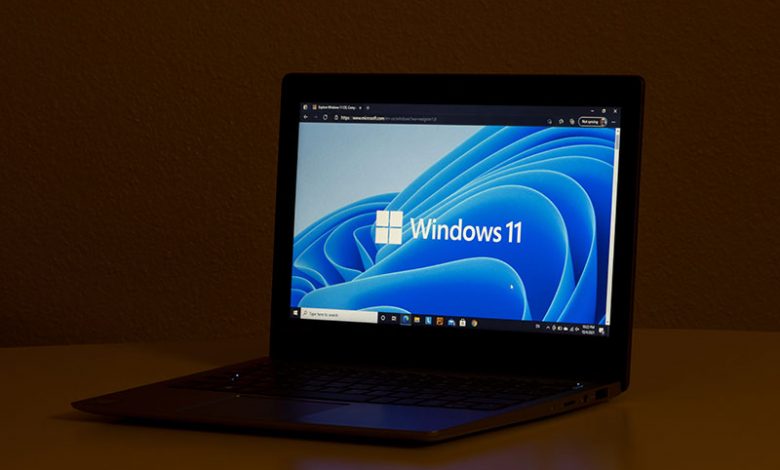Installing Windows 11, 10 & Reinstalling Windows After a Reset: Factors Affecting Installation Time

The downloading and installing of Windows 11 from bootable USB hinges on various factors, including the size of the Windows 11 ISO file, your internet speed, system configurations, and the type of drive for installation, all take a bit of time to complete. How much? Let's go find out by taking a detailed look at each step.
- Windows 11 ISO and Internet Speed. The Windows 11 ISO file size is around 5.2 GB, necessitating a stable, high-speed internet connection to download effectively. The download time varies depending on your internet speed.
- Using the Windows Media Creation Tool. The Windows Media Creation Tool can create a bootable USB drive. This portable tool takes merely one to two minutes to set up. After setting up, you can download the Windows 11 ISO file and create a bootable USB drive.
After setting up the Windows Media Creation Tool and initiating the download process, the timing required ranges from 30-60 minutes. This varies depending on the speed of your internet connection. - Performing the Clean Installation. After creating a bootable USB drive, the next phase is to perform a clean installation of Windows 11. This process takes different lengths, roughly around 30 minutes to 1 hour. The time varies depending on your system configurations; for instance, a system with a powerful processor, sizable RAM, and a large hard drive can complete the process faster.
Table of Contents
Factors Affecting Installation Time
There are additional factors that might influence the installation time of Windows 11. These might include the USB drive's speed, your computer's USB bus speed, and processor speed. The type of drive for the installation (SSD or HDD) also plays a significant role. SSD drives, known for their greater read and write speeds, will complete the installation much faster than an HDD. Considering all these aspects, the installation typically takes 30 minutes to 1 hour to complete.
What About Windows 10?
Installing Windows 10 from a bootable USB drive is a standard, efficient installation method. The process's length can vary based on critical factors, including PC configuration and internet speed.
- Time Taken for Installation Process. Typically, installing Windows 10 from a bootable USB drive takes about 30 minutes to 1 hour. However, it's important to note that situations can vary widely based on several factors. If you have a stable internet connection and a high-end PC, the installation process can be completed in as little as 20-30 minutes.
- The Role of Your PC's Configuration. Your computer's hardware configuration plays a crucial role in the installation process. For instance, a high-end PC with advanced processor capabilities can significantly reduce the installation time. Similarly, if your PC runs on Windows 8 or later and supports USB 3.0, the process becomes notably faster and more dynamic.
- The Installation Process. The installation begins with downloading the necessary Windows 10 files to the USB drive. Following this, the USB drive becomes a portable and bootable device that you can use to install Windows 10. One of the advantages of this method is its convenience; it's faster than optical disk or DVD installations and offers greater mobility. Once you've prepared the USB drive, the installation process is simply a matter of running the setup from the USB and following the on-screen instructions until completion.
Reinstalling Windows after a Reset
Resetting your PC is a method of reinstalling Windows, and the time taken for this process can vary significantly based on a few critical decisions. Let's examine these in greater detail.
Choosing to Keep or Delete Personal Files
During a reset, you can keep or delete your files. Your decision might significantly impact the reset duration. If you retain your files, the process will scan through and preserve them, thus extending the overall reset duration.
Disk Speed and Chosen Settings
The disk speed is another major variable for the time taken to reinstall Windows after a reset. A faster disk speed ensures a quicker reset process. However, be prepared for a procedure lasting anywhere from 30 minutes to 2 hours. Besides the internet speed and whether you've chosen to keep your files, other factors, such as your system's general performance and efficiency, will affect the overall duration. Consequently, ensuring that your Windows system is regularly updated and well-maintained will potentially lead to less time-consuming resets.
Differences between Installing Windows on SSD and HDD
The type of hard drive used can significantly impact the time taken to install Windows from a USB drive. The main types of hard drives are SSD (Solid State Drive) and HDD (Hard Disk Drive). Each has different speeds and performance levels. With SSDs, Windows installations are typically quicker than those on HDDs. This difference is due to the faster read and write speeds of SSDs. This speed difference means that if you're installing Windows on an SSD, you may complete the process in as little as 15-20 minutes. It's an important aspect to consider when planning the installation process.
PC configuration also dramatically impacts the duration of Windows installation. For high-end PCs with components such as 32GB RAM, a 4 GHz Intel Core i9 processor, and 1-2TB hard drive storage space, the installation process can be completed in approximately 15-20 minutes. The execution becomes even quicker if your PC has an SSD, which can reduce the installation time by more than half compared to a standard hard drive. If you were to install Windows 10 through USB 3.0 ports, the time required would be even less. So, the overall time taken to complete the installation depends an awful lot on the makeup of your PC.
If you are still having trouble, consider contacting remote technical support options.




